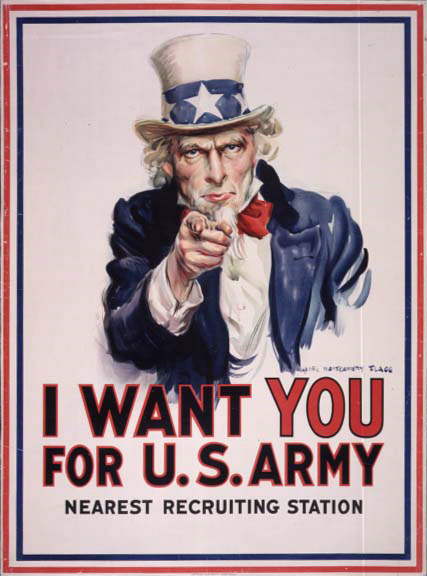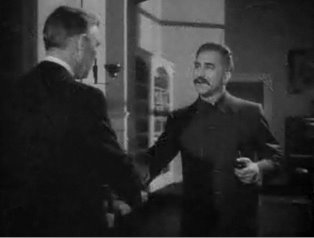Submitted by Sheldon Rampton on
 A student who is writing a paper that "explores the legal limits of US government propaganda" contacted us recently. He asked if we could recommend any books or essays that "deal with the limits of US legislation concerning PR and propaganda." Unfortunately, there is a scarcity of books written about this particular topic, although there are several that discuss how U.S. government propaganda techniques were developed and practiced, often to the detriment of democracy. Among the more recent books that discuss U.S. government propaganda, of course, there are the books that I co-authored with John Stauber -- Weapons of Mass Deception: The Uses of Propaganda in Bush's War on Iraq and The Best War Ever: Lies, Damned Lies and the War in Iraq. And there are a number of articles on PRWatch.org, written by myself and by my colleague, Diane Farsetta, about the Pentagon military analyst program that was exposed last year by New York Times reporter David Barstow. The articles we've written that are most relevant to this topic include:
A student who is writing a paper that "explores the legal limits of US government propaganda" contacted us recently. He asked if we could recommend any books or essays that "deal with the limits of US legislation concerning PR and propaganda." Unfortunately, there is a scarcity of books written about this particular topic, although there are several that discuss how U.S. government propaganda techniques were developed and practiced, often to the detriment of democracy. Among the more recent books that discuss U.S. government propaganda, of course, there are the books that I co-authored with John Stauber -- Weapons of Mass Deception: The Uses of Propaganda in Bush's War on Iraq and The Best War Ever: Lies, Damned Lies and the War in Iraq. And there are a number of articles on PRWatch.org, written by myself and by my colleague, Diane Farsetta, about the Pentagon military analyst program that was exposed last year by New York Times reporter David Barstow. The articles we've written that are most relevant to this topic include:
- "Pentagon Pundit Scandal Broke the Law"
- "Congress Orders Investigation into Pentagon Pundit Scandal"
- "Pentagon Rejects Its Own Pundit Program Whitewash"
- "Desperately Seeking Disclosure: What Happens When Public Funds Go To Private PR Firms?"
- "The Emperor Doesn't Disclose: Why the Fight Against Fake News Continues"
The U.S. Government Accountability Office has issued a number of statements that are worth reviewing regarding the legal limits on government persuasion campaigns. The GAO has generally held that behavior is the standard for defining what it calls "covert propaganda." This standard means that in essence, the government is engaged in covert propaganda if it conducts a persuasion campaign in which the government's role in sponsoring that campaign is not publicly disclosed. In 2005, for example, the GAO issued the following statement about "prepackaged news stories" prepared by federal agencies, such as video news releases:
While agencies generally have the right to disseminate information about their policies and activities, agencies may not use appropriated funds to produce or distribute prepackaged news stories intended to be viewed by television audiences that conceal or do not clearly identify for the television viewing audience that the agency was the source of those materials. It is not enough that the contents of an agency's communication may be unobjectionable. Neither is it enough for an agency to identify itself to the broadcasting organization as the source of the prepackaged news story.
By contrast, the U.S. Department of Defense sought to shift the emphase from behavior to "intent" in its 2003 "information operations roadmap." Obviously, this shift loosens the restrictions on government propaganda, because it is much easier to document whether behavior has occurred than it is to ascertain someone's intent. From another perspective that I consider "pro-propaganda," readers might be interested in Matt Armstrong's "Mountain Runner" weblog. Armstrong is generally friendly to the arguments of some Pentagon strategists. For example, they would like to see revisions to the Smith-Mundt Act, which places limits on domestic dissemination of U.S. government information campaigns that target other countries. (It is the Smith-Mundt Act which states that Voice of America broadcasts cannot be rebroadcast within the United States.) Here are a couple of examples of commentary from "Mountain Runner," and Diane Farsetta's take on them:
- "Senator Edward Zorinsky and Banning Domestic Dissemination by USIA in 1985"
- "The Smith-Mundt Act: Facts, Myths, and Recommendations"
- "Debating the Ban on Domestic Propaganda"
 There are also a number of more historical books that I find interesting in regard to this topic, such as Hollywood Goes to War: How Politics, Profits and Propaganda Shaped World War II Movies, by Clayton R. Koppes and Gregory D. Black. It details how the Office of War Information (OWI) under President Franklin Delano Roosevelt issued instruction manuals to U.S. movie studios, sat in on story conferences, reviewed screenplays, pressured studios to change scripts and even scrap pictures, and sometimes even wrote dialogue for key speeches. The OWI attempted, with varying degrees of success, to shape the message in movies ranging from "Little Tokyo, U.S.A." (which falsely accused Japanese-Americans of complicity in the attack on Pearl Harbor) to "Mission to Moscow" (which painted a rosy picture of the Soviet Union to bolster the wartime US-USSR pact). As these examples illustrate, propaganda is a dangerous thing even when deployed in service of a worthy cause, such as the World War II fight against fascism. I think it's also worth reading Christopher Simpson's 1994 book, The Science of Coercion: Communication Research and Psychological Warfare 1945-1960. Simpson shows how the U.S. national security establishment's psychological warfare machinery influenced mass communication research as an academic research discipline. Due to that influence, he argues, "leading scholars identified the cramped, often brutal attributes of mass communication characteristic of one stage of advanced industrial societies, then substituted that conception of communication for communication as such." Instead of exploring the rich range of purposes, emotions and methods by which people communicate, scholars focused narrowly on communications for the purpose of persuasion -- in a word, propaganda:
There are also a number of more historical books that I find interesting in regard to this topic, such as Hollywood Goes to War: How Politics, Profits and Propaganda Shaped World War II Movies, by Clayton R. Koppes and Gregory D. Black. It details how the Office of War Information (OWI) under President Franklin Delano Roosevelt issued instruction manuals to U.S. movie studios, sat in on story conferences, reviewed screenplays, pressured studios to change scripts and even scrap pictures, and sometimes even wrote dialogue for key speeches. The OWI attempted, with varying degrees of success, to shape the message in movies ranging from "Little Tokyo, U.S.A." (which falsely accused Japanese-Americans of complicity in the attack on Pearl Harbor) to "Mission to Moscow" (which painted a rosy picture of the Soviet Union to bolster the wartime US-USSR pact). As these examples illustrate, propaganda is a dangerous thing even when deployed in service of a worthy cause, such as the World War II fight against fascism. I think it's also worth reading Christopher Simpson's 1994 book, The Science of Coercion: Communication Research and Psychological Warfare 1945-1960. Simpson shows how the U.S. national security establishment's psychological warfare machinery influenced mass communication research as an academic research discipline. Due to that influence, he argues, "leading scholars identified the cramped, often brutal attributes of mass communication characteristic of one stage of advanced industrial societies, then substituted that conception of communication for communication as such." Instead of exploring the rich range of purposes, emotions and methods by which people communicate, scholars focused narrowly on communications for the purpose of persuasion -- in a word, propaganda:
Put most simply, they saw mass communication as an instrument for persuading or dominating targeted groups. They understood "communication" as little more than a form of transmission into which virtually any type of message could be plugged (once one had mastered the appropriate techniques) to achieve ideological, political, or military goals. Academic contractors convinced their clients that scientific dissection and measurement of the constituent elements of mass communication would lead to the development of powerful new tools for social management in somewhat the same way earlier science had paved the way for penicillin, electric lights, and the atom bomb.
Another book that sounds interesting (but which I confess I haven't read) is Hugh Wilford's The Mighty Wurlitzer: How the CIA Played America. Here's a synopsis from Publishers Weekly:
Well before the beginning of the Cold War, the Soviet Union achieved a series of propaganda successes by using front organizations that ostensibly served independent purposes but were orchestrated by Moscow. In the late 1940s, Frank Wisner, chief of political warfare for the newly created CIA, proposed a U.S. version: a mighty Wurlitzer that like its namesake would play the music America desired. California State-Long Beach professor Wilford describes the Wurlitzer as most successful in supporting Western Europe's noncommunist leftist unions, students and intellectuals during the 1950s. As the Cold War spread, the CIA organized programs in the Third World combining development with anticommunism. The CIA was more a source of funding and fine-tuning than the master player its organizers intended; few of its front groups were unaware of the connection. What made the system work was a shared, principled and intense anticommunism combined with trust in America's intentions and capabilities.
I'm sure there are other books and essays that I've forgotten to mention. If you have any other recommendations, please use the comment link at the bottom of this blog post to add your suggestions.

Comments
DB replied on Permalink
Century of the Self
Anonymous replied on Permalink
Noam Chomsky "Manufacturing
Karen V. replied on Permalink
"The Trap" by the same director
Greg3522 replied on Permalink
PR Books
John Brown replied on Permalink
Additional suggested readings
Anonymous replied on Permalink
US Propaganda
Anonymous replied on Permalink
Books on propaganda
PRWatcher replied on Permalink
Propaganda through Art
Anonymous replied on Permalink
Propaganda Articles